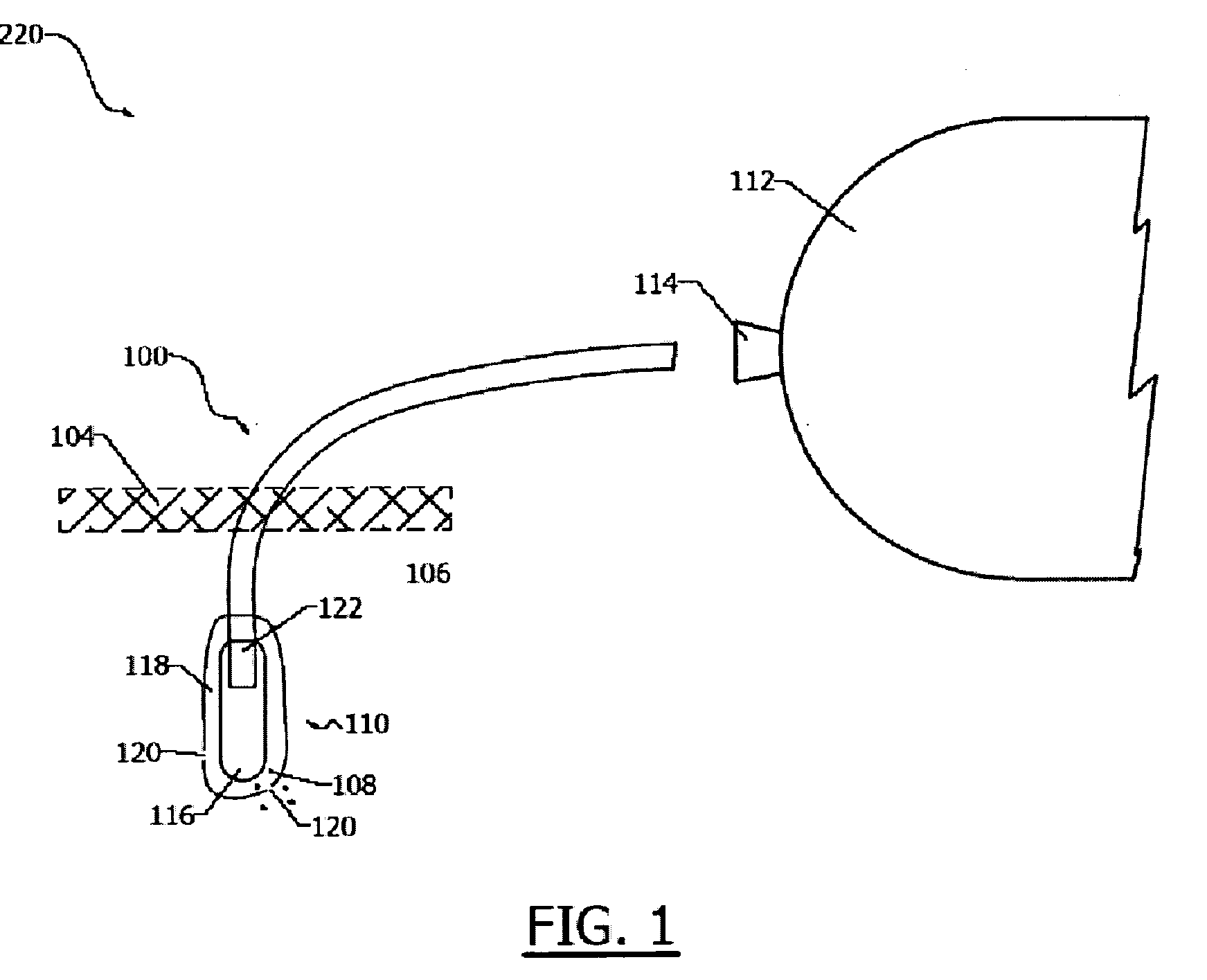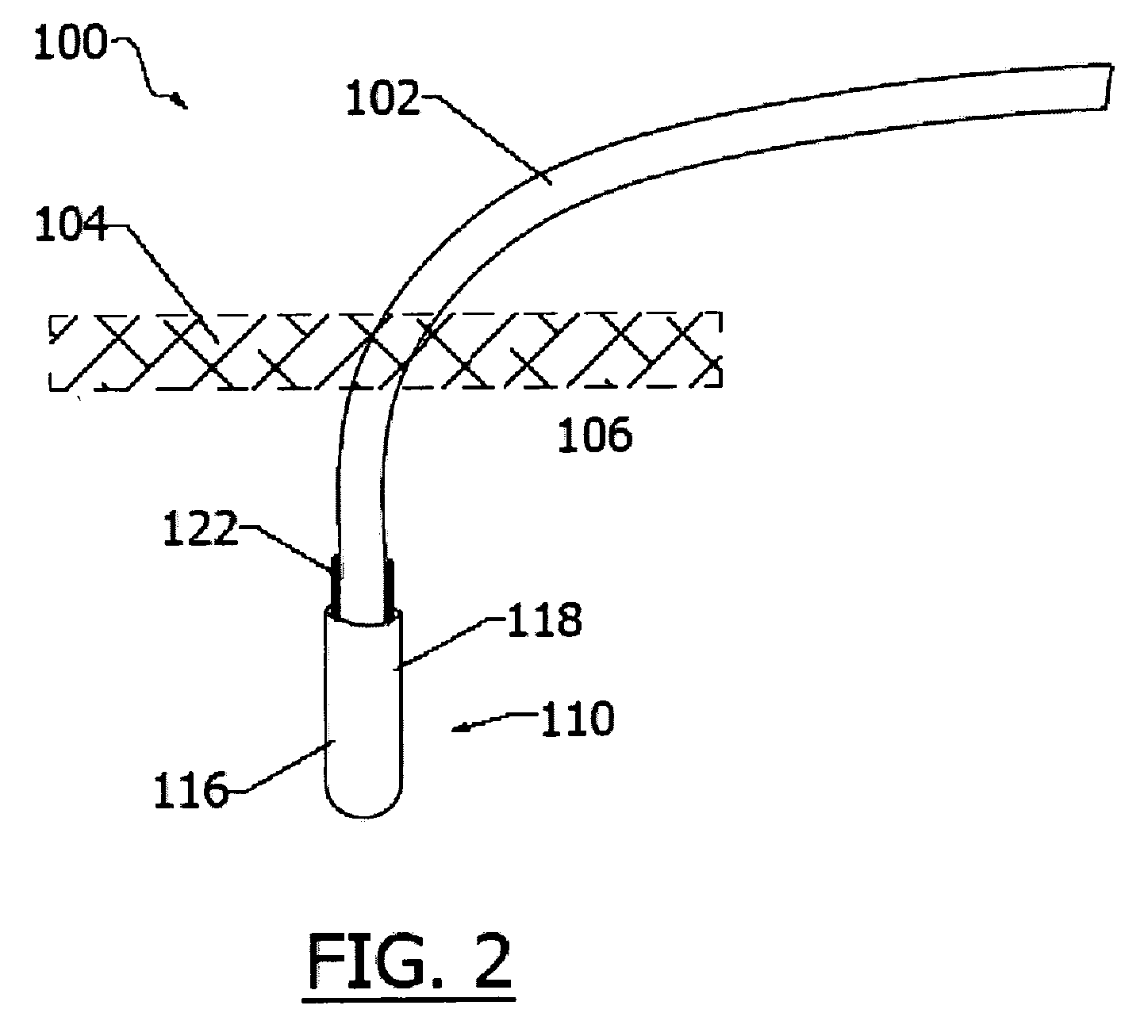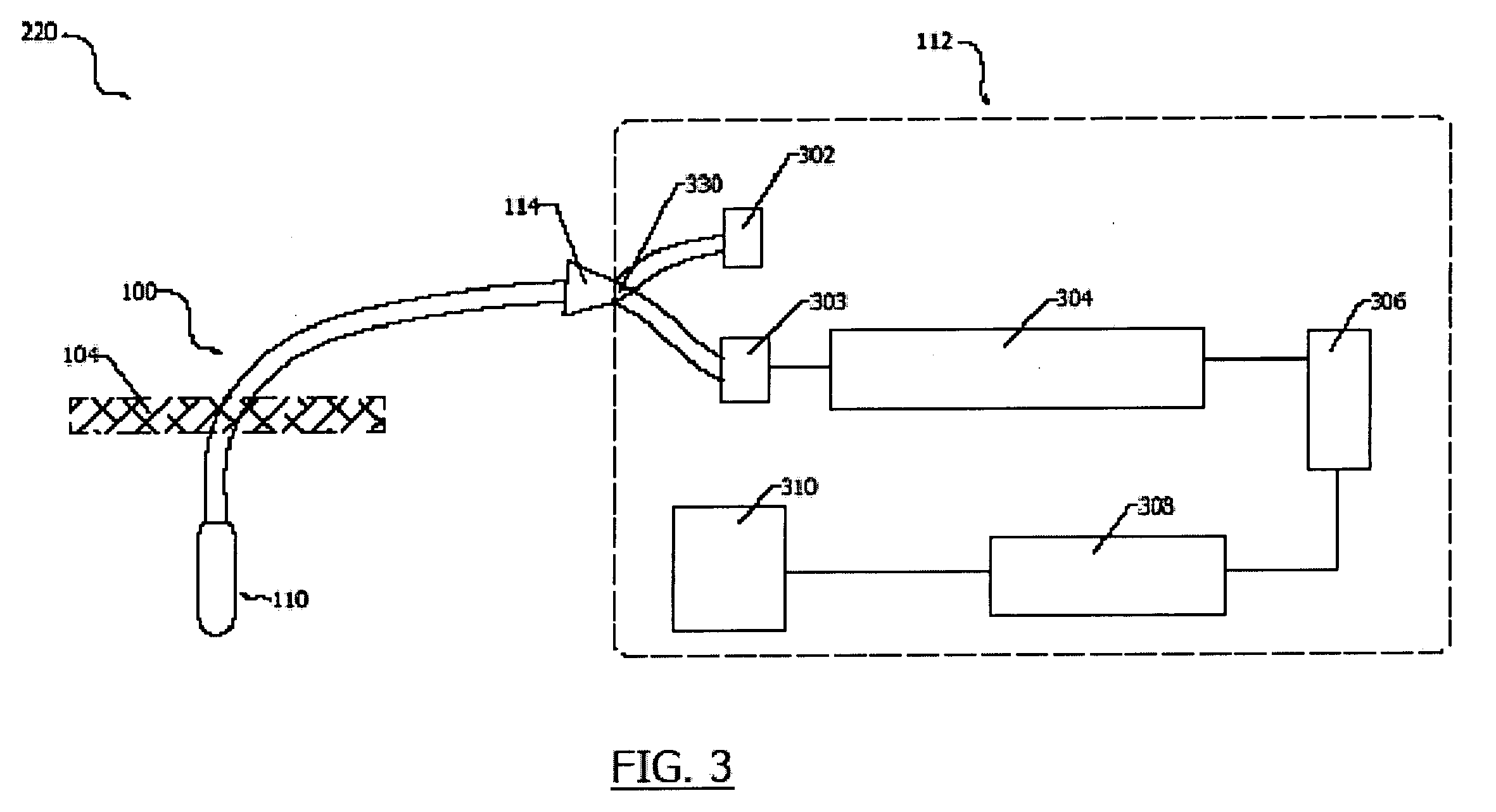Percutaneous chemical sensor based on fluorescence resonant energy transfer (FRET)
a technology of chemical sensor, which is applied in the field of percutaneous chemical sensor based on fluorescence resonant energy transfer, can solve the problems of repeated painful finger pricks, difficult to achieve, and serious complications, and achieve the effect of convenient insertion into the patient's body
- Summary
- Abstract
- Description
- Claims
- Application Information
AI Technical Summary
Benefits of technology
Problems solved by technology
Method used
Image
Examples
Embodiment Construction
[0018] The detailed description set forth below in connection with the appended drawings is intended as a description of exemplary embodiments and is not intended to represent the only embodiments in which the biosensing devices, methods and systems can be practiced. The term “exemplary” used throughout this description means “serving as an example, instance, or illustration,” and should not necessarily be construed as preferred or advantageous over other embodiments. The detailed description includes specific details for the purpose of providing a thorough understanding of the biosensing devices, methods and systems. However, it will be apparent to those skilled in the art that the biosensing devices, methods and systems may be practiced without these specific details.
[0019] In an exemplary embodiment, minimally invasive biosensors are attached to the ends of percutaneously injected optical fibers. The fiber-optic biosensor takes advantage of the configuration of chronically impla...
PUM
 Login to View More
Login to View More Abstract
Description
Claims
Application Information
 Login to View More
Login to View More - R&D
- Intellectual Property
- Life Sciences
- Materials
- Tech Scout
- Unparalleled Data Quality
- Higher Quality Content
- 60% Fewer Hallucinations
Browse by: Latest US Patents, China's latest patents, Technical Efficacy Thesaurus, Application Domain, Technology Topic, Popular Technical Reports.
© 2025 PatSnap. All rights reserved.Legal|Privacy policy|Modern Slavery Act Transparency Statement|Sitemap|About US| Contact US: help@patsnap.com



